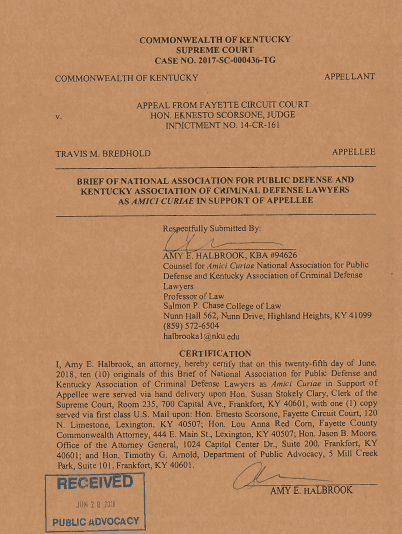
Summary of Argument
The Eighth Amendment requires courts to assess a challenged sentencing practice in light of the “evolving standards of decency that mark the progress of a maturing society.” Trop v. Dulles, 356 U.S. 86, 100-01 (1958). To determine evolving standards of decency, courts are to consider objective criteria and their own independent judgment. Atkins v. Virginia, 536 U.S. 304, 311-12 (2002). A court may exempt a class of offenders from a punishment if it finds a national consensus against the practice and it independently determines that the punishment is disproportionate to the level of culpability of the class members. Roper v. Simmons, 543 U.S. 551, 564 (2005).
After considering national trends and newly discovered developmental data, the United States Supreme Court declared the death penalty unconstitutional as applied to the mentally disabled in 2002, see Atkins, 536 U.S. at 304, and youths seventeen and under in 2005, see Roper, 543 U.S. at 577. In deciding those cases, the Court found a national consensus against the practice of executing such individuals and that members of each class were categorically less culpable than traditional adult offenders. Atkins, 536 U.S. at 316; Roper, 543 U.S. at 571. Five years after Roper, the Court categorically exempted youths seventeen and under from life incarceration without the possibility of parole (Juvenile Life Without the Possibility of Parole, “JLWOP”) sentences for non-homicide crimes. Graham v. Florida, 560 U.S. 48, 50 (2010). In Graham the Court found a national consensus against JLWOP for non-homicide crimes where these practices were rarely imposed even where statutorily allowed, with one state imposing a “significant majority” (77 of 123 or 62.6%) of JLWOP sentences and ten others imposing the remainder (46 of 123 or 37.39%). Id. at 64. In Miller v. Alabama the Court categorically exempted youths seventeen and under from mandatory JLWOP sentences, emphasizing that youths presented greater possibility of rehabilitation than adults. 567 U.S. 460, 471 (2012) (citing Roper, 543 U.S. at 570).
A categorical exemption is proper in Mr. Bredhold's case as it was in Atkins, Roper, Graham and Miller. Youths aged 18-20 are frequently treated differently under the law than adults twenty-one and over. Data shows that capital punishment is imposed upon youths aged 18-20 at the time of their offense at a frequency similar to the imposition of JLWOP for non-homicide crimes in Graham. 560 U.S. at 64-66. Recent developmental research indicates that, like the youths in Roper, youths aged 18-20 are categorically less culpable than offenders twenty-one and over. The categorical ban on capital punishment should be extended to protect youths aged 18-20 from cruel and unusual punishment.